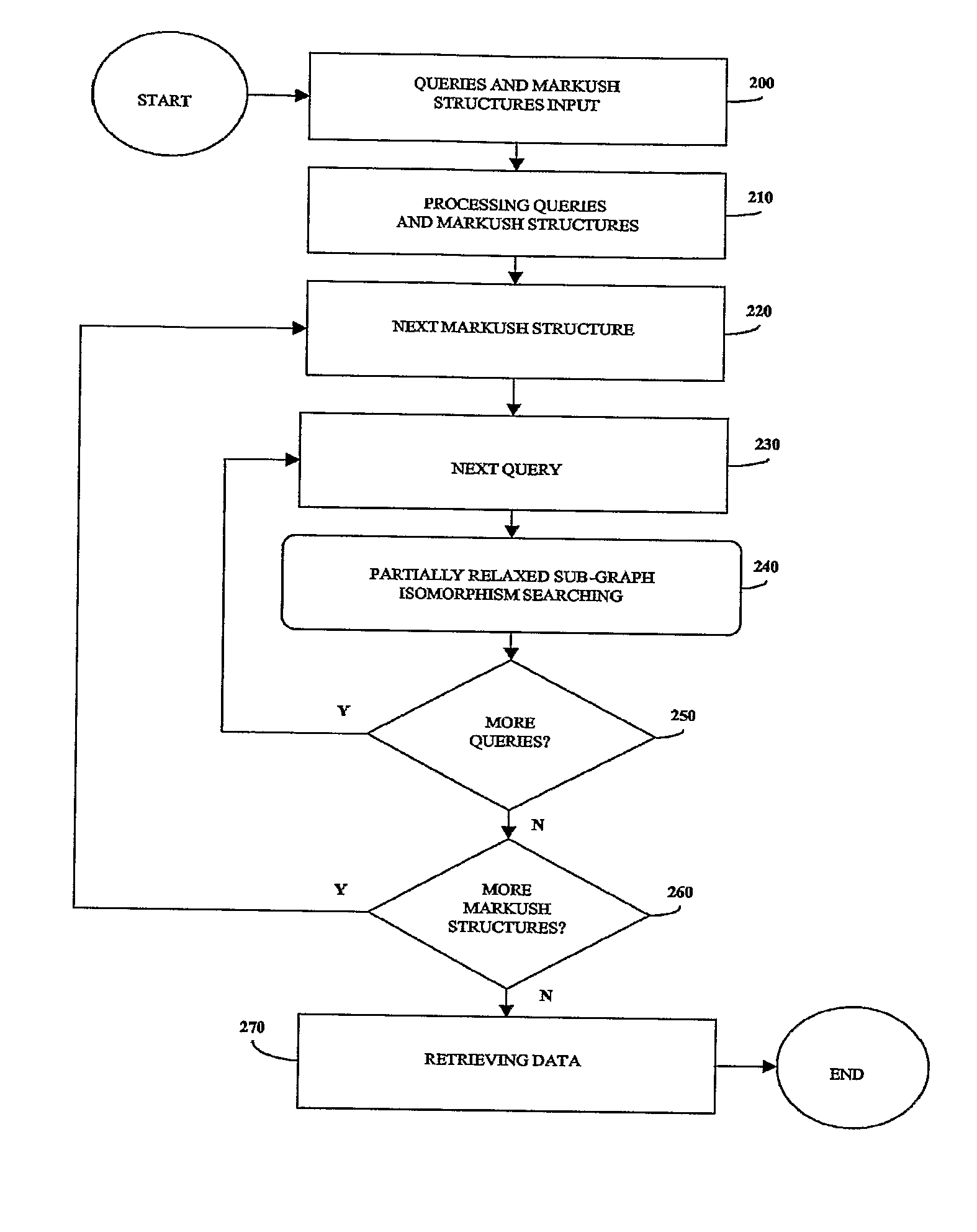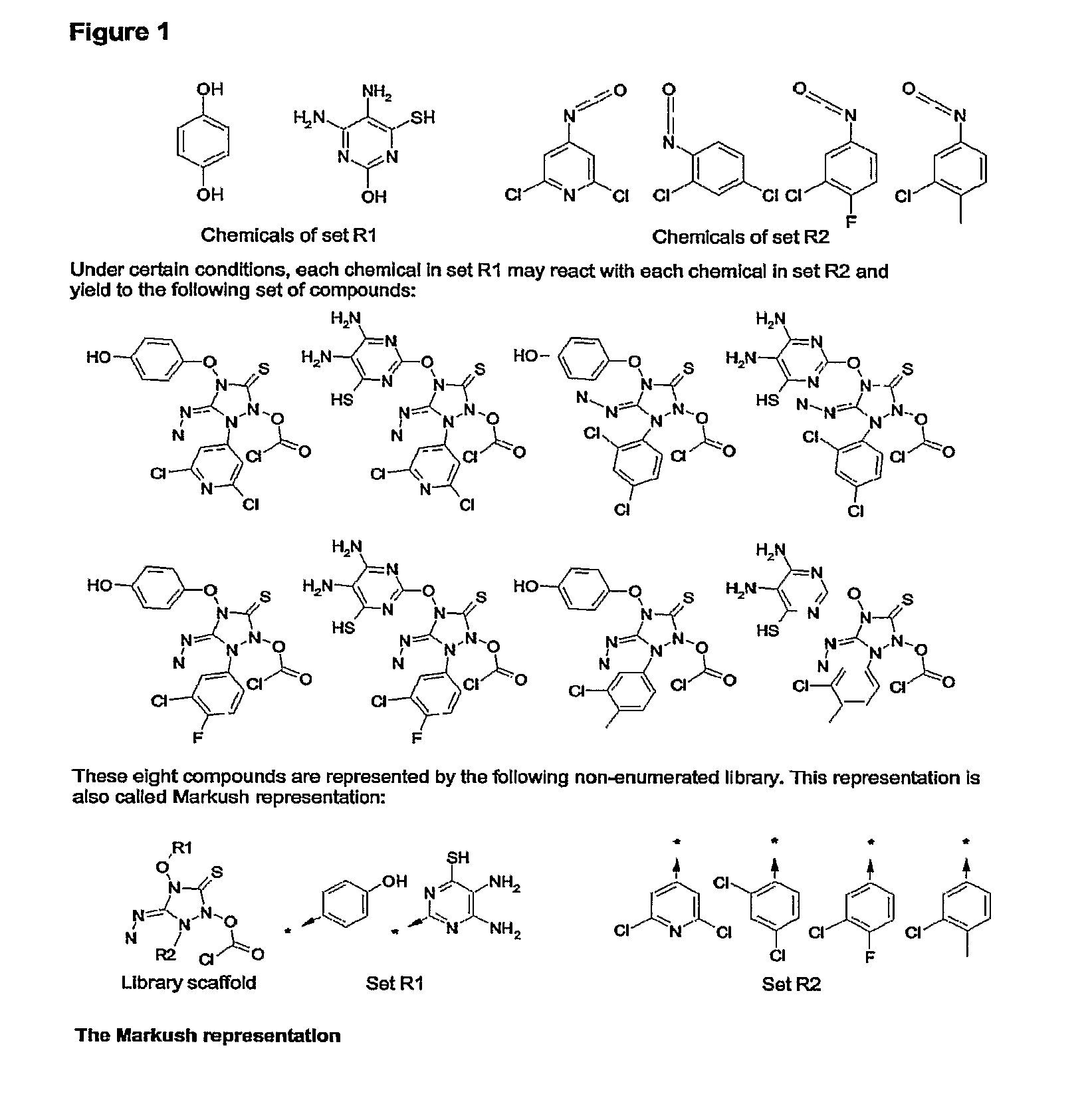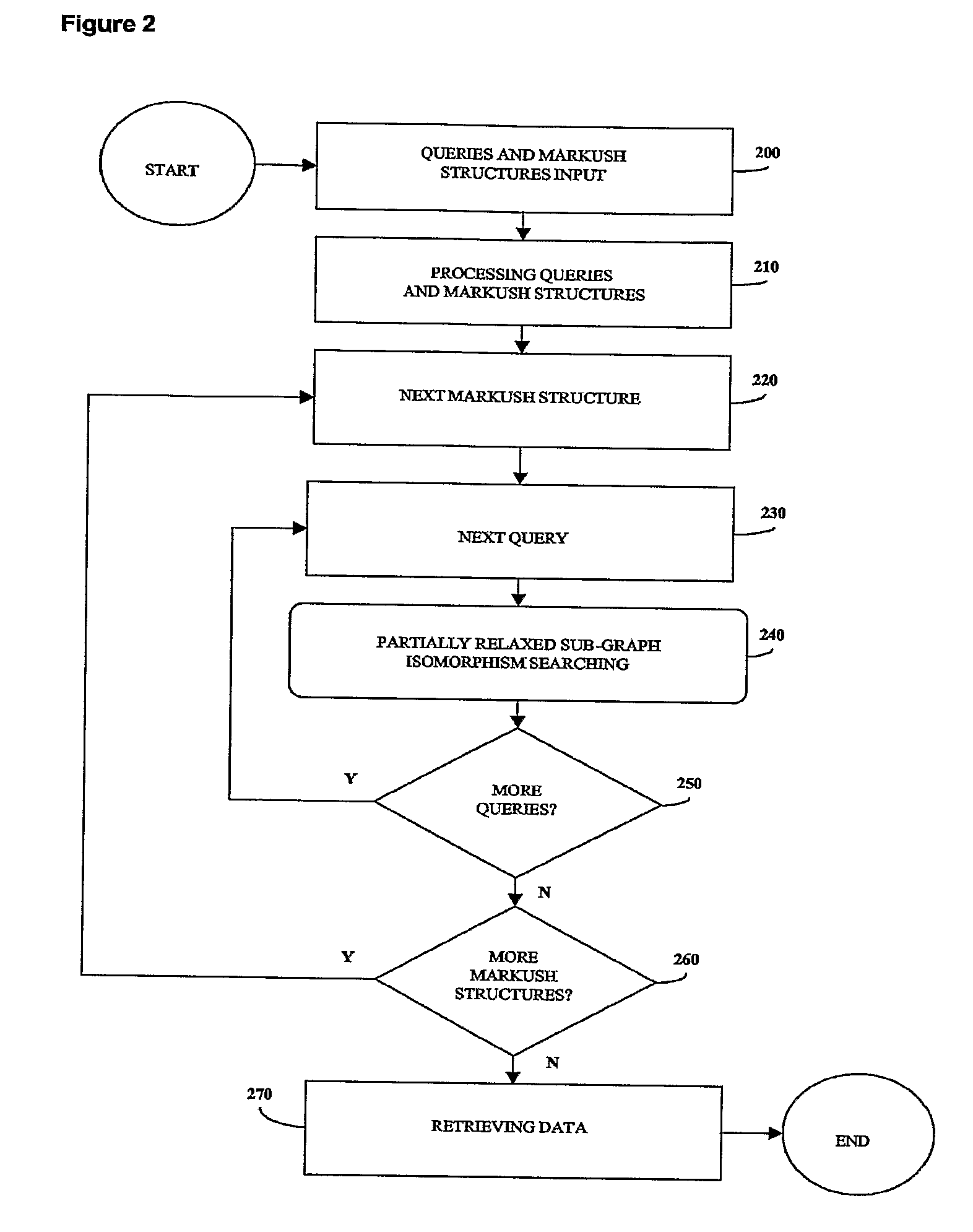Method for fast substructure searching in non-enumerated chemical libraries
- Summary
- Abstract
- Description
- Claims
- Application Information
AI Technical Summary
Benefits of technology
Problems solved by technology
Method used
Image
Examples
example 1
[0309] The method of the invention has been run on a computer to retrieve the sub-libraries containing a given query structure (one query structure as input).
[0310] Table 1 shows different examples of sub-libraries corresponding to the search of a query structure in a unique combinatorial library named CL0001. The sub-libraries as indicated in Table 1 are exact because each member of the sub-libraries contains the query structure. The first two sub-libraries correspond to mapping the query structure on the scaffold and set R1 (respectively R2). In the third sub-library, the query spans across the scaffold, R1 and R2 simultaneously. The fourth and fifth sub-libraries are special cases where the query is entirely mapped on either the scaffold or R1. The type of localization indicated in the column designated “Type” corresponds to the global localization of the query. In all cases, the method displays the number of members matching the query for each mapping, and also stores the list ...
example 2
[0313] The method of the invention has been run on a computer to show an unnecessary set of building blocks in a retrieved sub-library (one query structure as input).
[0314] Table 4 shows two examples in which several building blocks of R1 can make the final product to bear the query structure. However all those building blocks are not equivalent. For example, any of the 287 building blocks is enough to find the query structure on the product once it has been attached to the scaffold. This is true whatever the R2 building block. On the other hand, R1 building blocks in sub-library “9 / 700 / 3” must be combined with one of the 87 R2 building blocks to have the same result. Similarly, Table 6 is a screenshot showing several building blocks of R2 that can make the final product to bear the structure.
TABLE 4examples of different types of building blocks of R1 thatcan make the final product to bear the query structureSub-library IDLibrary nameTypeR1R29 / 700 / 1CL00001Spans287Any9 / 700 / 3CL0000...
example 3
[0317] The method of the invention has been run on a computer to show the results of the logical operator “AND” on two sub-libraries.
[0318] Table 7 shows two sub-libraries of the same library CL00001 matching different query structures. FIG. 11 represents them as an array, the first sub-library drawn with vertical lines and the second one with horizontal lines. The overlap of these two sub-libraries is hashed. These two sub-libraries have in common two members of R1 and five members of R2. As a result, the intersection of the two sub-libraries is the sub-library of CL00001 displayed in hashed and made of said two members of R1 and said five members of R2 (Table 8).
TABLE 7sub-libraries of the same library CL00001matching different query structuresSub-library IDLibrary nameTypeR1R28 / 700 / 1CL00001Spans51010 / 700 / 2CL00001Spans88
[0319]
TABLE 8intersection of the two sub-libraries of Table 7Sub-library IDLibrary nameTypeR1R210 / 700 / 1 AND 10 / 700 / 2CL00001Spans25
PUM
 Login to View More
Login to View More Abstract
Description
Claims
Application Information
 Login to View More
Login to View More - R&D
- Intellectual Property
- Life Sciences
- Materials
- Tech Scout
- Unparalleled Data Quality
- Higher Quality Content
- 60% Fewer Hallucinations
Browse by: Latest US Patents, China's latest patents, Technical Efficacy Thesaurus, Application Domain, Technology Topic, Popular Technical Reports.
© 2025 PatSnap. All rights reserved.Legal|Privacy policy|Modern Slavery Act Transparency Statement|Sitemap|About US| Contact US: help@patsnap.com



